
Ghosts, Goblins and Witches
This Halloween, discover some of our most spooktacular species.
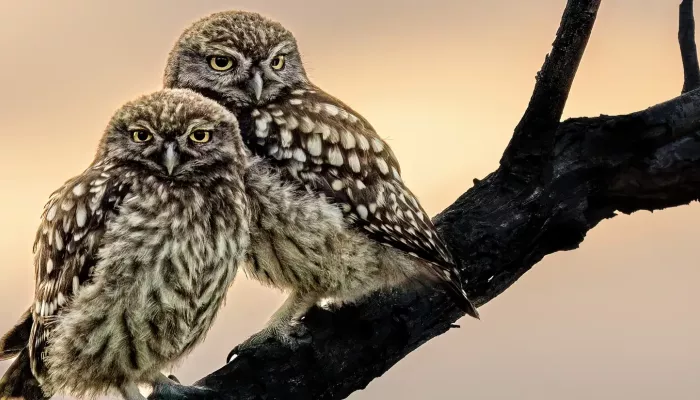
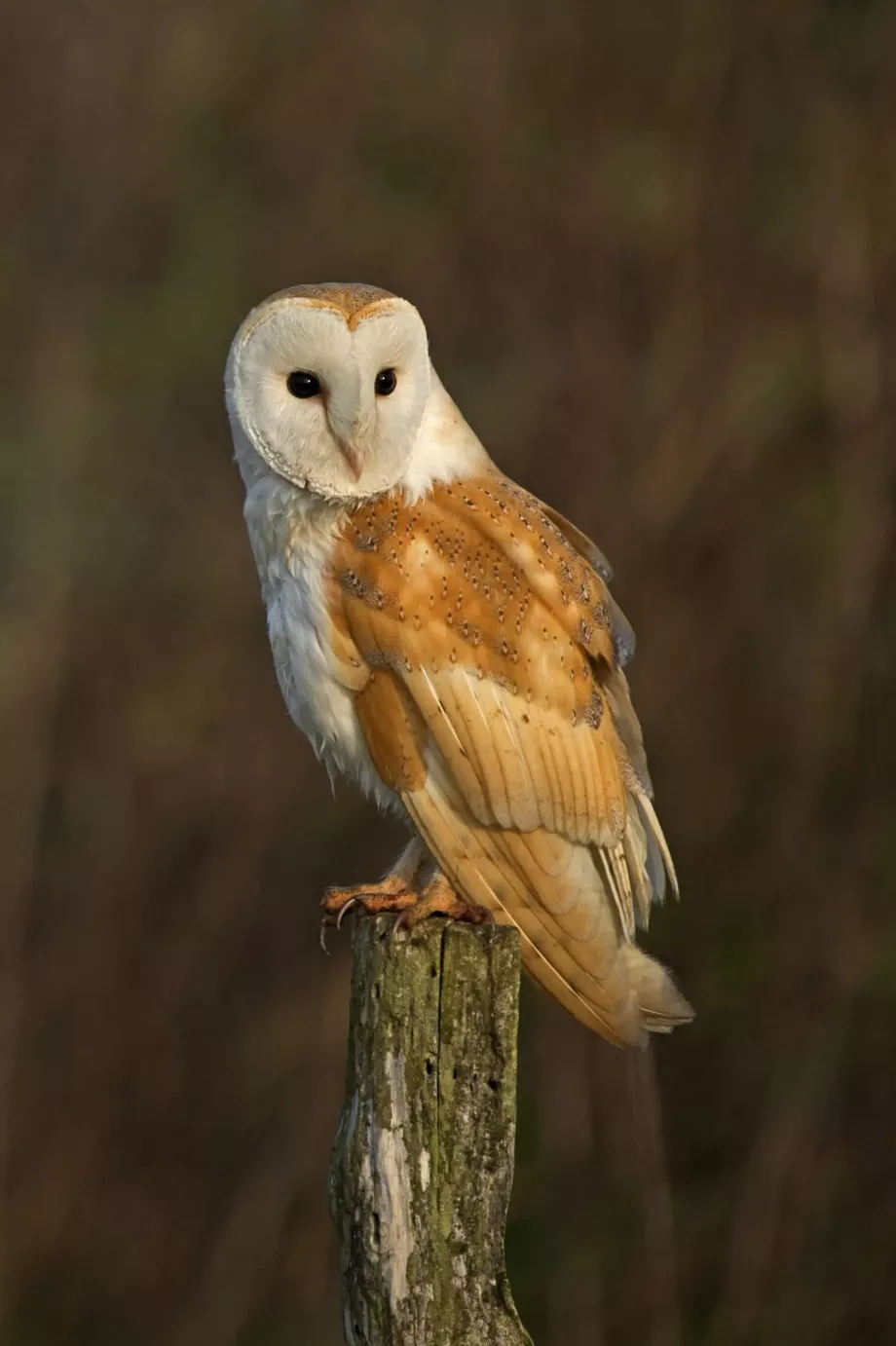
© Andy Rouse/2020VISION
The beautiful barn owl is, perhaps, our most-loved owl. With its distinctive heart-shaped face, pure white feathers, and ghostly silent flight, it's easy to identify. Look out for it flying low over fields and hedgerows at dawn and dusk.
Perhaps our most familiar owl, the barn owl will sometimes hunt in the daytime and can be seen 'quartering' over farmland and grassland looking for its next small-mammal meal. However, it is perfectly adapted to hunt with deadly precision in the dark of night: combined with their stealthy and silent flight, their heart-shaped faces direct high-frequency sounds, enabling them to find mice and voles in the vegetation.
Habitats: Grassland; Heathland and moorland; Farmland; Coastal; Wetlands

© Joshua Copping
Tawny owls are our biggest common owl, familiar in Britain’s woodland, parks and gardens. The ‘too-wit too-woo’ call often referred to as being the song of the generic owl, is that of the tawny owl. But it isn’t the call of a single bird – instead, it’s made by a male and female calling to each other. The female makes a ‘too-wit’ sound and the male answers with ‘too-woo’! These incredible creatures sit on their favourite perch on the lookout for small animals like voles and mice to eat. They nest during springtime in hollow trees, or sometimes choose to reuse an old crow’s nest!
Habitats: Farmland; Woodland; Towns and gardens

© Luke Massey/2020VISION
Introduced into the UK in the 19th century, the diminutive little owl can now be seen along hedgerows, on farmland, and in parkland across England and Wales. It often perches on a pole or rock, looking out for its unsuspecting prey.
Although mainly nocturnal, the little owl can be spotted in the day hunting invertebrates (especially worms), small mammals, reptiles, amphibians, and small birds. It is often seen perched on a telegraph pole, an old parkland tree, along a hedgerow, or on a rock; from these positions, it quietly scans the ground for prey. When it spots something, it swoops down and catches its victim with either its claws or beak. Little owls breed between March and August, forming monogamous pairs and nesting in hollow trees.
Habitats: Grassland; Heathland and moorland; Farmland; Coastal; Wetlands; Woodland; Towns and gardens
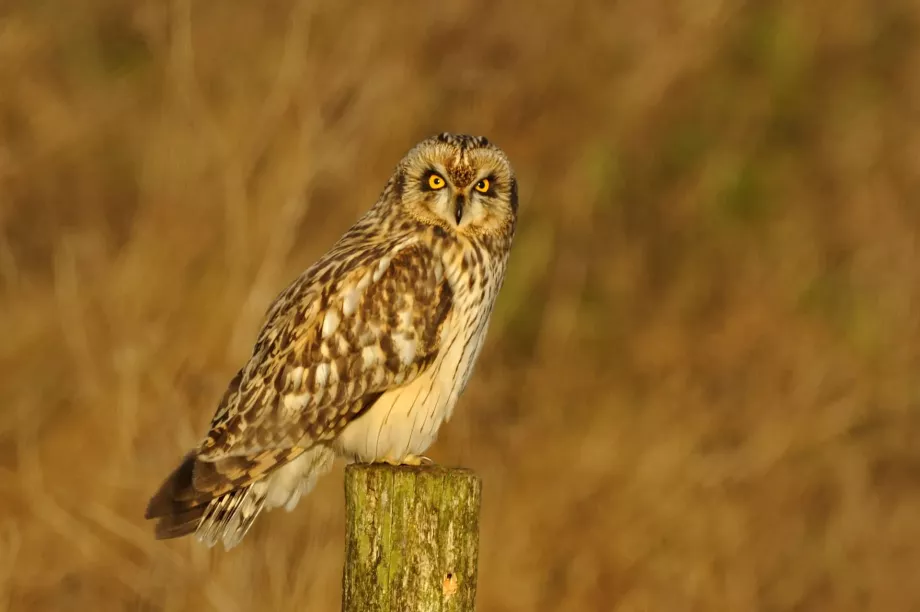
© Andy Rouse/2020VISION
The short-eared owl, or 'Shortie', is an unusual owl because it prefers to be out and about in the daytime. It is most easily spotted in winter, when resident birds are joined by migrants. Look out for it over moorlands and saltmarshes.
Short-eared owls mainly hunt during the daytime, flying low over moorland, grassland, and saltmarshes where they feed on field voles and small birds. About the same size as the barn owl, but with long wings, the short-eared owl breeds in North England and Scotland, but can be seen more widely in winter. They nest on the ground in scraped-out hollows lined with grass and downy feathers.
Habitats: Grassland; Heathland and moorland; Farmland; Coastal; Wetlands
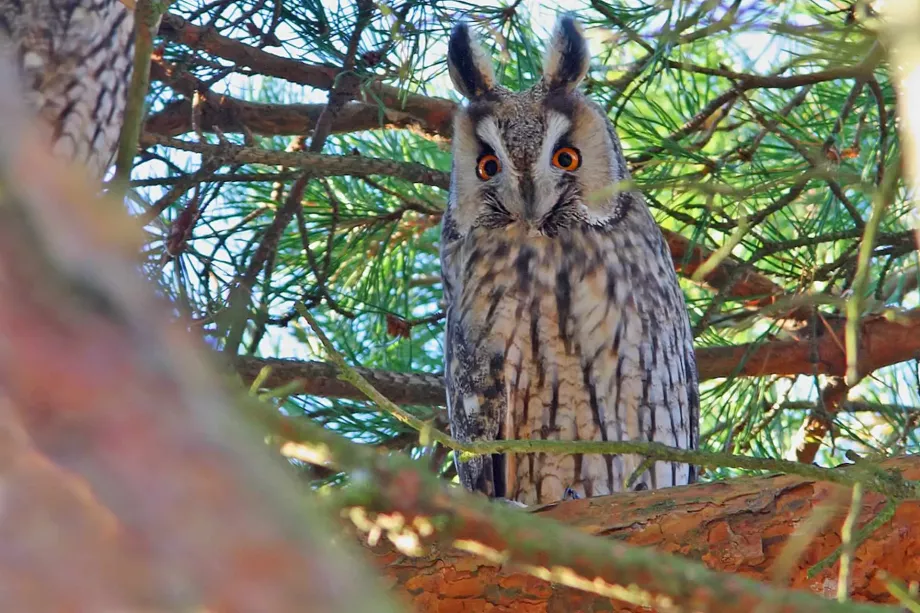
© Stefan Johansson
Unsurprisingly, the nocturnal long-eared owl sports large 'ear tufts' on its head, while the short-eared owl has much smaller ear tufts. A shy bird, it is best spotted around the coast when migrating, or in its communal winter roosts.
Long-eared owls are shy, nocturnal birds of coniferous forests, plantations and mixed woodlands and can be seen in communal roosts of more than 20 birds. Small mammals, such as voles, form the majority of the long-eared owl's diet, but small birds are also important. The long-eared owl hunts out its prey by sweeping clearings and fields in a zig-zag flying pattern, scanning the ground for movement. Once prey is spotted, the owl swoops down and dispatches its victim on the ground by biting the back of the head. Long-eared owls breed from February onwards, laying their eggs in old nests or tree hollows.
British owls are true "masters of stealth," excelling in silent flight due to distinctive adaptations. Their specialised feathers feature a smooth, velvety texture that minimises rustling sounds, and the serrations along the edges of their wing feathers effectively reduce turbulence during flight and muffle sound, ensuring a nearly silent approach.
Owls possess large, forward-facing eyes that are specially adapted for low light conditions, allowing them to see exceptionally well in the dark. Owls have incredibly flexible necks which allows them to turn their heads 180-degrees each way, effectively giving them 360-degree vision, helping them spot and track their prey. This exceptional vision, coupled with their silent flight capabilities, underscores the adaptability and prowess of British owls as efficient nocturnal hunters in the diverse landscapes they inhabit.
Owls play a pivotal role in maintaining ecological balance as apex predators in the intricate web of the food chain. Owls, with their keen hunting instincts and powerful talons, serve as natural regulators of rodent numbers, curbing potential ecological imbalances caused by unchecked populations. By preying on rodents, owls contribute to the overall health of ecosystems, preventing overgrazing and the depletion of plant life.
Different owls have different hunting habits and prey on different animals, meaning each fits a different ecological niche. Barn owls predate mainly on small mammals such as mice, voles, and shrews, whereas little owls hunt small mammals as well as beetles and worms. Long-eared owls on the other hand have even been known to supplement their diet with rats, birds, and even smaller owls.
An owl’s diet can be determined from investigation of their pellets and is what makes out new owl pellet workshop so much fun for visiting groups.
As apex predators in Kent, owls sit at the top of the food chain and are therefore a great way for investigating food webs. In this new and exciting workshop, children will get the chance to learn about the inter-relationships between predator and prey and learn about the transfer of energy through the food chain.
During the session, children will work in groups to dissect owl pellets and use the bones they find within to identify what species of mammals, amphibians, and invertebrates the owls have been eating. By working out the diet of the owls, and combining with knowledge of the habitats the pellets were found in, children will be able to make a good estimate as to the species of owls the pellets originated from. Children love the chance to get hands-on with science and are fascinated by what they can discover from the owl pellets.

This Halloween, discover some of our most spooktacular species.
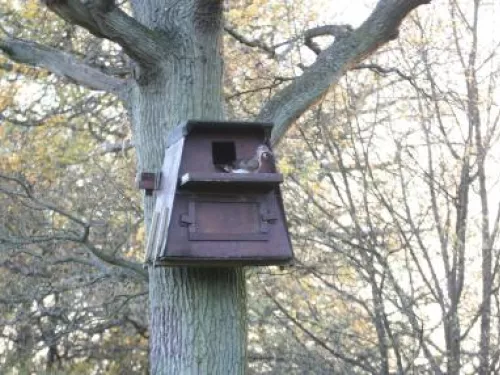
Lynne and Peter Flower have written an update on our work to enhance the number of Barn Owls in and around Kent.
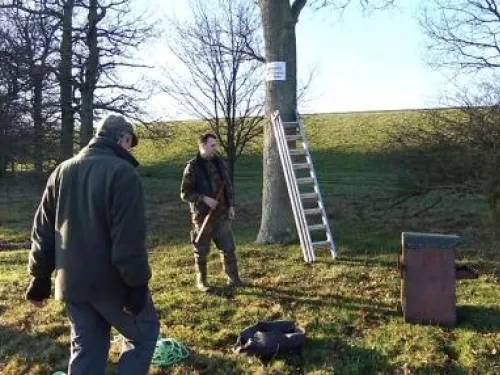
Our hardworking volunteers, Lynne & Peter Flower, have written their second blog for Kent Wildlife Trust. This time they are focusing on our work building homes for barn owls.